
How Long Did It Take to Build an Average Pyramid? A Comprehensive Guide
How long does it take to build an average pyramid? This question has captured the imagination of several tourists, historians, and archaeologists for generations: “How long does it take to build an average pyramid? At Respect Egypt Tours, this is one question we hear people ask more often. The Ancient Egyptians left us many clues, but they also kept some mysteries locked in the stones. This comprehensive guide will give us the most profound insight into the Egyptian Pyramids. Moreover, we will provide unique information about the pyramids that find their way to the internet.
We aim to take you on a journey to the heart of Ancient Egyptian civilization and explain how such majestic structures were built by hand and genius over millennia.
Below, you will find all you need to know about the building process. You will learn about the Great Pyramid of Giza’s construction, its timeline, its average core block size, its largest stone, and the social context of the Old Kingdom. Read on to unravel the secrets built into the foundations of Ancient Egyptian pyramids!
The Role of Pyramids in Ancient Egyptian Civilization

The pyramids of Ancient Egypt were far more than impressive tombs. They were statements of power, authority, and religious devotion. They typified the achievements of the Old Kingdom and displayed the brilliance of those pharaohs who had envisioned them. Built about 4,500 years ago, they continue to stand as testaments to endurance and ingenuity. It was not just the physical endurance but the spirit that lived on from the time of the Old Kingdom.
Throughout Egypt, pyramids were important in both the religious and social context. The pharaohs believed they required a solid resting place on their journey to the afterlife. Pyramids performed this function. Every block, corridor, and chamber had a symbolic purpose. The rituals performed by priests inside of them ensured the pharaoh’s well-being in the afterlife.
Besides, the pyramid was a national project whereby thousands of laborers were involved. They came from villages across the Nile valley, contributing various skills. Farmers, stone masons, engineers, carpenters, and laborers worked together. The result was an expansive collaboration under the pharaoh’s vision. Because of this, pyramids stood as communal achievements, representing the collective work of the Old Kingdom society.
Understanding the Construction Steps

Building a pyramid was not a mindless activity. The Ancient Egyptians had a blueprint. Although we have got much information from excavations, some steps are still conjectural. We believe the general succession of events that resulted in a finished pyramid is as described below.
Choosing a Site
The builders needed a solid rock foundation. This ensured that the pyramid would not sink or tilt. They often chose land on the west bank of the Nile. This location symbolized the realm of the dead in Egyptian cosmology.
Aligning the Pyramid
The Ancient Egyptians were not careless about alignment. They aligned the sides of the pyramid to the cardinal points of the compass: north, south, east, and west. Many scholars believe the Egyptians used the stars or the rising and setting sun to keep precise angles, achieving near-perfect alignments still visible today.
Quarrying the Stones
Large limestone blocks came from nearby quarries. Workers cut and shaped these blocks using copper chisels, wooden mallets, and stone tools. Harder materials like diorite were often used to help shape the massive stones. Meanwhile, the largest average stone used for inner structures, especially in the Great Pyramid of Giza, sometimes weighed many tons.
Transporting the Stones
Moving enormous blocks was a logistical feat. Ancient Egyptians likely used wooden sleds placed on mud or a slick surface. Workers pulled the blocks with rope. Some evidence suggests they watered the ground to reduce friction. Smaller boats on the Nile may have also transported specific stones from distant quarries.
Ramping the Stones into Place
The exact ramp system used is debated. Theories include a single, straight ramp and a ramp that spirals around the outside of the pyramid. These ramps allowed workers to pull massive stones to each successive layer until they reached the planned height of the pyramid.
Finishing and Casing
With the core of the pyramid finished, skilled craftworkers fashioned a smooth outer layer, called the casing. These men used the finest limestone from Tura for the casing. Many of these casing stones have disappeared over the centuries, reused in later buildings. But in antiquity, pyramids shone brilliant white under the Egyptian sun.
3 Theories on How the Pyramids Were Built
Innovations Over Time
The Ancient Egyptians did not construct the Great Pyramid of Giza overnight; pyramid-building skills strengthened. This first stone pyramid, from Pharaoh Djoser, was a step pyramid. The builders continued improving methods and began raising “true pyramids,” with smooth sides. During the reign of Pharaoh Khufu, they had mastered each part of the process. These led to the Great Pyramid, which reached 146.6 meters, thus becoming the highest building of its day.
These changes meant that buildings became more accurate, complex, and bold. Each pyramid still needed a monumental organization. The labor force, materials, food supplies, and engineering all fell into place. This harmony required the strongest leadership and a very firm adherence to spiritual beliefs. It was also crucial to motivate and nourish the workers, especially during the inundation when normal field work was impossible.
A Monument to Pharaoh Khufu
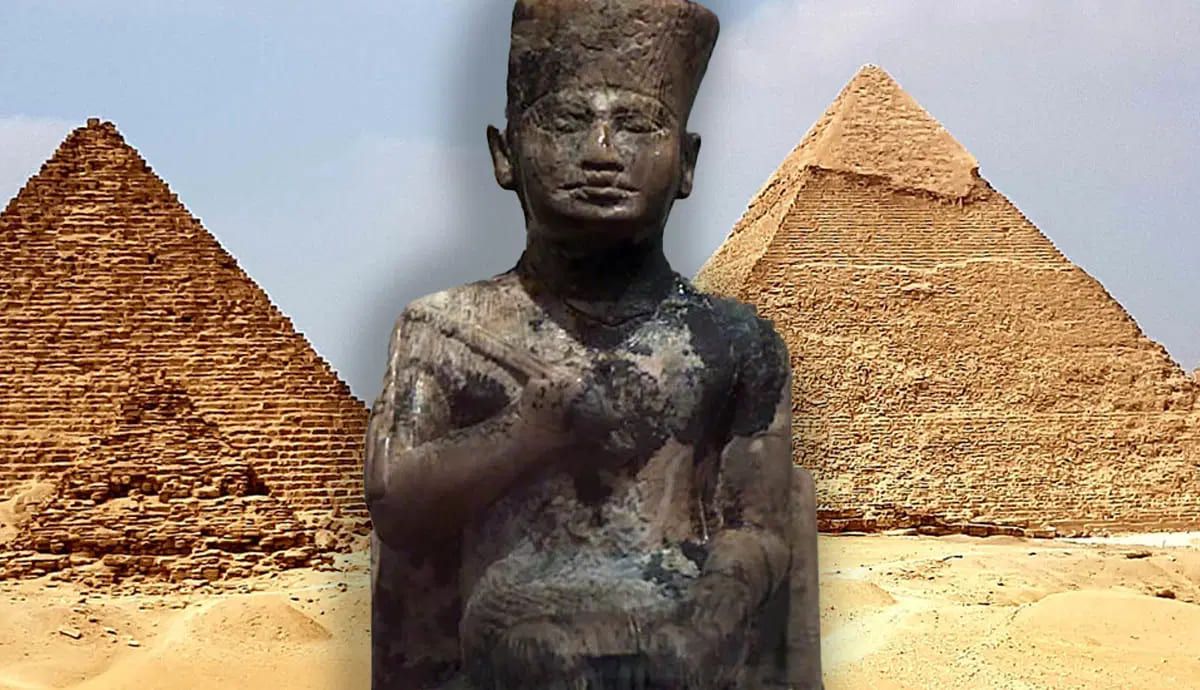
Historians and archaeologists believe the Great Pyramid of Giza, built for Pharaoh Khufu (c. 2580–2560 BCE), has a core of over two million limestone blocks. These blocks each weighed an average of between 2.5 to 15 tons. Some blocks, which are inside in granite used for the King’s Chamber, reach weights as high as 80 tons.
For 3,800 years, the Great Pyramid was the tallest structure on Earth. That fact alone is astounding. Man has wondered for centuries about the labor force it took to move those enormous blocks.
Average Cole Block of the Great Pyramid
Each pyramid’s core blocks differed in size. Experts estimate that the average core block in the Great Pyramid of Khufu weighs about 2.5 tons. Limestone, quarried, made up most of these blocks. Precision was key. Workers took care to cut and place every stone to exact specifications. They stacked blocks in layers, creating a step-like core. Then they filled the gaps with smaller stones and mortar.
Largest Average Stone in Construction

It has to be realized that the average stone size was not the biggest and even the average for all pyramids. Some stones weighed over 2.5 tons, especially in the relieving chambers above the King’s Chamber in the Great Pyramid. Workers made these granite stones, bringing them from Aswan. Their movement needed special logistics. Most scholars suggest special barges transported the granite slabs on the Nile, and then workers pulled them up ramps to the pyramid’s construction site.
The amount of energy exerted to move these giant stones implies a great extent of organization. It was innovative engineering in those times, enforced. It was not a matter of muscle power at all. Expert supervisors scribes and architects planned each step.
How Long Did It Take to Build an Average Pyramid? Time Estimates and Historical Records. One of the most intriguing questions about Ancient Egyptian architecture is: “How long did it take to build an average pyramid?” The answer is not always as straightforward. Records are limited, and most details come from inscriptions and archaeological remains. However, we can glean a general timeline from the evidence.
The Historical Estimates
Some ancient Greek scholars, such as Herodotus, made their estimates. With the Great Pyramid, Herodotus estimated 20 years to completion, a figure that modern Egyptologists have accepted as accurate with Khufu’s pyramid. But was that typical for all pyramids? Not necessarily.
Smaller pyramids, such as those of some Middle Kingdom pharaohs, took less time. Builders abandoned or adjusted other pyramids during construction, further complicating the record. On average, though, it would have taken 10 to 30 years to build a decent-sized Old Kingdom pyramid. Many believe completing many Giza pyramids within a single pharaoh’s reign shows their scale.
Factors Affecting the Construction Timeline

Size and Complexity
A larger pyramid required more blocks, more labor force, and more organization. The construction would, therefore, take a longer time. The Great Pyramid in Giza is an excellent example of a large-scale masterpiece, which took twenty years to build.
Organization of Workers
The workforce was not just a bunch of slaves. Modern evidence suggests that laborers were well-paid, given food rations, and medical care, and perhaps housed in worker villages. A well-organized workforce could speed up construction. if the pharaoh’s reign ended, the project might slow or cease.
Seasonal Impact
The Nile’s flooding season was the time when farmers were available to work on such projects. But sudden changes in the river's flooding, political turmoil, or lack of resources could delay the process. So the timing differed from pharaoh to pharaoh.
Architectural Innovations
With time, architectural skills got better. The builders learned to cut and position the stones more effectively. Radical changes in design could delay construction. Gradual improvements could shorten it.
Pharaoh’s Ambition
Some rulers built several large-scale monuments: they invested enormous resources in their pyramids, while others used their reigns to restore temples or commission obelisks. All these choices affected the speed at which a pyramid would rise.
Therefore, there is not a one-size-fits-all timeline. Some pyramids might have taken a little under a decade. Others spanned three decades. Yet, within historical records, “How long did it take to build an average pyramid?” is answered with a window of about 10 to 20 years.
When Were Ancient Pyramids Built?
Workforce: Who Built the Pyramids?
You may be familiar with the popular images in the popular culture of these gigantic pyramids being built by slaves. Yet, the modern consensus in Egyptology seems to disagree. While some forced labor might have existed, Egyptologists believe skilled and seasonal laborers made up most of the workforce. These came from Egyptian villages during the annual Nile flood when farming tasks were on hold.
Archaeological excavations have also uncovered workers’ villages complete with housing, bread-baking areas, and breweries. In such an environment, labor seems to have been well-organized. Someone fed, housed, and provided medical attention to the workers. This entailed an organization that required scribes and overseers who managed day-to-day quotas and the logistics of supply. That such a system existed at all is astounding. In this way, the actual building process could go on year after year.
The Hierarchy of Builders

Architects and Engineers
The entire pyramid concept started with elite professionals—architects and engineers connected to the royal court. They designed the pyramid’s dimensions, internal chambers, and passages.
Stone Masons
Skilled masons-shaped limestone or granite blocks in quarries. They ensured each block had the right dimensions. The final shape had to fit into the pyramid’s core.
Transport Specialists
Hauling several-ton blocks was a problem. It required rope handlers, ramp builders, and sled pullers. The supervisors made sure that the stones reached the proper place at the right time.
General Labour Force
A large army of workers was required to perform the day-to-day operations such as hauling blocks, mixing mortar, clearing debris, digging canals, constructing ramps, baking bread, and preparing provisions.
Scribal and Administrative Workforce
Scribes recorded distributing labor, rations of food, and the usage of materials. They balanced the entire enterprise. They needed to do this to prevent resource waste.
Thus, pyramid building was a social and industrial achievement. It required intense coordination. The pharaoh’s prestige depended on successful completion, thus Old Kingdom society united to ensure it.
Materials: Limestone, Granite, and Beyond
Local vs. Imported Materials
Egypt is rich in limestone. Thus, it became the primary staple for constructing pyramids. Most of the blocks came from local quarries near the Giza Plateau. Limestone is rather soft, and as such, easier to carve. This facilitated quicker production. However, some parts of the pyramid required stronger stones.
Builders used granite from Aswan in important areas such as the King’s Chamber, door lintels, and other high-stress areas. Transporting granite from Aswan involved a journey of hundreds of kilometers along the Nile. This just goes to show just how determined the Ancient Egyptians were to build a monument that would last forever.
The Importance of Mud Bricks
Although the largest pyramids are of stone, mud bricks were important at different stages of the process. Workers built ramps, temporary walls, and scaffolding with mud bricks. Mud bricks took less energy to make than chiseling stones did. They were helpful building aids that could be recycled. If the pyramid reached a certain height, workers could remove these mud constructions and reuse the materials. Such flexibility testifies to the resourcefulness of the Egyptians.
Logistics: Transporting Stones and Organizing Labor
The Nile’s Role
The Nile River was central to pyramid-building logistics. Many quarries were upstream. Workers loaded heavy stones onto barges and floated them downstream to the construction site. Once near Giza, workers would remove them from the boats. Then they hauled them to the pyramid base on wooden sleds. This approach reduced labor requirements for much of the journey.
Food and Workforce Sustenance
Feeding several thousands of workers daily was not a simple task. Archaeologists have found the remains of bread molds and fish or cattle bones near camps of workers. This suggests a continuous network of food supply. Workers also required enormous quantities of beer. Beer was a staple in Ancient Egypt, used to keep laborers hydrated and nourished. The organization behind this was complex: scribes had to calculate the size of rations, track daily consumption, and manage agricultural outputs from across the land.
Real Facts About Pyramid Construction (Rarely Discussed)
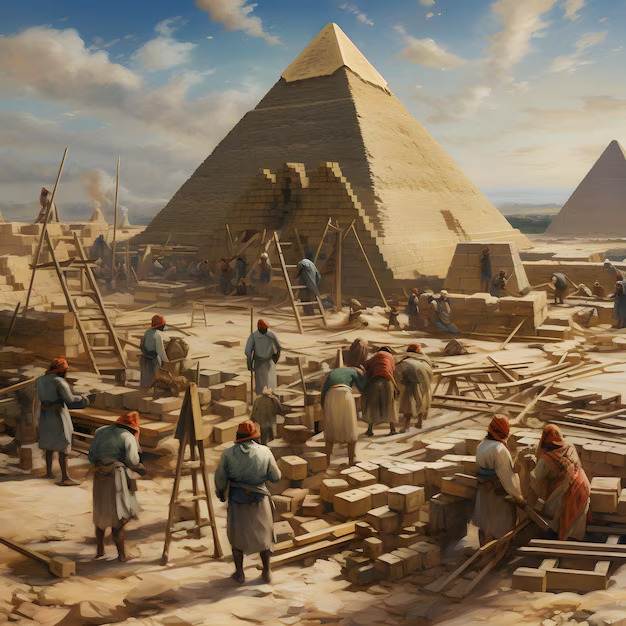
Unique Quarry Marks
In some interior blocks of pyramids, archaeologists have found markings—sometimes dates, crew names, or short inscriptions. These provide rare glimpses of the actual teams that quarried or laid the stone. These “gang names” could be something like “Friends of Khufu” or “Drunkards of Menkaure,” reflecting group identity and camaraderie. Such markings help confirm that large, organized teams dedicated years to completing each monument.
Experimental Archaeology Insights
Modern researchers have attempted to replicate the building techniques using only Ancient Egyptian tools. These experiments confirm that well-managed teams can move multi-ton blocks with wooden sledges and rope. They also show that water or slick mud reduces friction, making it easier to slide massive blocks. These experiments combined support the notion that simpler means, but brilliant engineering, built the Great Pyramid, the tallest structure of its day.
Variations in Block Size
Despite widespread beliefs, pyramid blocks were not all standard size. Internal blocks might be hewn, while external ones needed more precise finishing. The largest average stone used (often in upper chambers) could weigh many tons, while the average core blocks of the Great Pyramid weighed about 2.5 tons. This varied approach spoke to efficiency. Builders saved time by reserving meticulous shaping for the visible surfaces.
Hidden Corridors and Chambers
Recent scanning technologies reveal hidden voids and chambers within certain pyramids. The functions of these hidden spaces remain uncertain. Some might relieve chambers to reduce pressure on internal rooms. Others may serve symbolic or religious purposes. These findings highlight we still have much to learn about how and why the Ancient Egyptians designed their pyramids in such intricate ways.
Estimating the Total Construction Time

Volume of Stones
A typical Old Kingdom pyramid requires several hundred thousand to over two million blocks. The total volume of stone is a major determinant of the time of construction.
Daily Output
Crews could place several hundred blocks a day. That, however, would depend upon well-orchestrated supply lines. Gaps in scheduling could reduce the daily output.
Stages in Construction
Some phases (such as quarrying and alignment) had overlap. Others, like inner corridor shaping, required work by specialists. All the sub-projects had to be fitted together in a puzzle.
Realistic Timelines
Given these factors, framing in terms of a 10- to 20-year period for a pyramid-like Khufu’s is quite reasonable. Strong supply lines may have enabled the completion of smaller pyramids, with much less stone volume, in about a decade. Other, more complicated designs or those fraught with logistic challenges may take longer.
Stated, if one asks how long it took to build an average pyramid, the easiest, and most historically supported range, is 15 to 25 years for large monuments. Builders spent less time on smaller or unfinished pyramids. The previous estimate can fit within many scholars’ interpretations by estimating workforce size, materials involved, project leadership, and the length of the pharaoh’s reign.
The Mystery and Legacy of Pyramid Construction
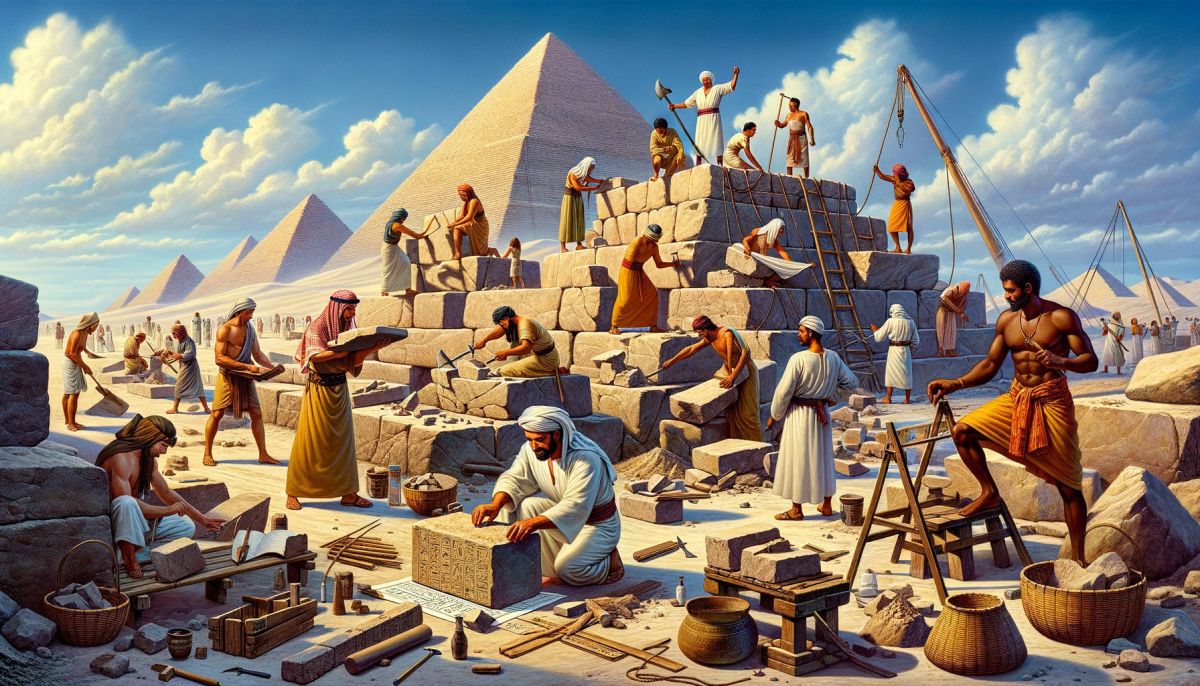
Ancient Egyptian pyramids very often overshadow all other monuments of antiquity. Builders used enormous stones, oriented them with absolute precision, and achieved very impressive heights. The question of “how long it took to build an average pyramid” stops being innocent. It touches upon a human dream and imagination. By speculating about such timelines, we appreciate Old Kingdom society’s passion and unity.
Every detail of pyramid architecture—from ramp design to workforce distribution—reveals advanced problem-solving. The Old Kingdom society was not primitive. Rather, it was led by visionary leaders who harnessed available resources with ingenuity.
How Understanding Timeframes Affects Modern Insights
Examining the time to build these monuments helps us understand Ancient Egypt’s economy, social structure, and religious worldview. It puts into perspective what a centralized government can do when citizens share a common cultural purpose. Even today, modern engineers are in awe of how the Egyptians thought about logistics and resource management.
Understanding the timeline of construction also enhances tourism experiences. One could appreciate not only the final grandeur but also the monumental effort behind each block. A belief at Respect Egypt Tours is that such insights deepen your connection to these timeless wonders.
What Happened to the Sphinx Nose in Egypt?
What to See at Giza
You will find the three main pyramids—those of Khufu’s, Khafre’s, and Menkaure’s—rising from the desert at Giza. Each of the pyramids has its peculiar charm. There is also a Great Sphinx near them, which seems to guard these pyramids. Just next to the Great Pyramid of Giza lies the Solar Boat Museum. Inside it, you will find a preserved wooden boat. Scholars say that Pharaoh Khufu used this boat for funerary rituals.
Conclusion
How long did it take to build an average pyramid? Because so many factors influenced each project, a specific numeric answer is elusive. The accepted timeline, however, ranges from about 10 to 20 or even 30 years, depending on size, design, and the resources available to each pharaoh. These monumental structures were the work of the Old Kingdom society, showcasing the sophistication and ambition that fueled Ancient Egypt’s culture.
Despite millennia of research, the Egyptian Pyramids continue to fascinate. Each new archaeological discovery, from hidden corridors to seen inscriptions, adds layers to our knowledge. The Great Pyramid, in particular, stands unmatched as the tallest structure of its time. It tells us that the Ancient Egyptians mastered not only engineering but also logistics, social organization, and resource distribution.
To this day, the feats continue to inspire wonder among historians, engineers, and travelers alike. Viewing these pyramids in person will change your life. We at Respect Egypt Tours welcome you to join us for a walk among these ancient wonders. To be dwarfed by immense blocks, to feel on your shoulders the same searing desert sun, and to imagine thousands of laborers working as a unit. You will share something in common with the men and women who created these over many centuries.
So, the next time you ask, “How long did it take to build an average pyramid? “, remember the complexities behind even the simplest answer. It was far more than just years: a testament to human ingenuity, an intense collective effort etched into stone for eternity.
We can still see these amazing pyramids today; they show us that people in the past had big ideas, worked together, and built incredible things that have lasted for thousands of years.
.webp)















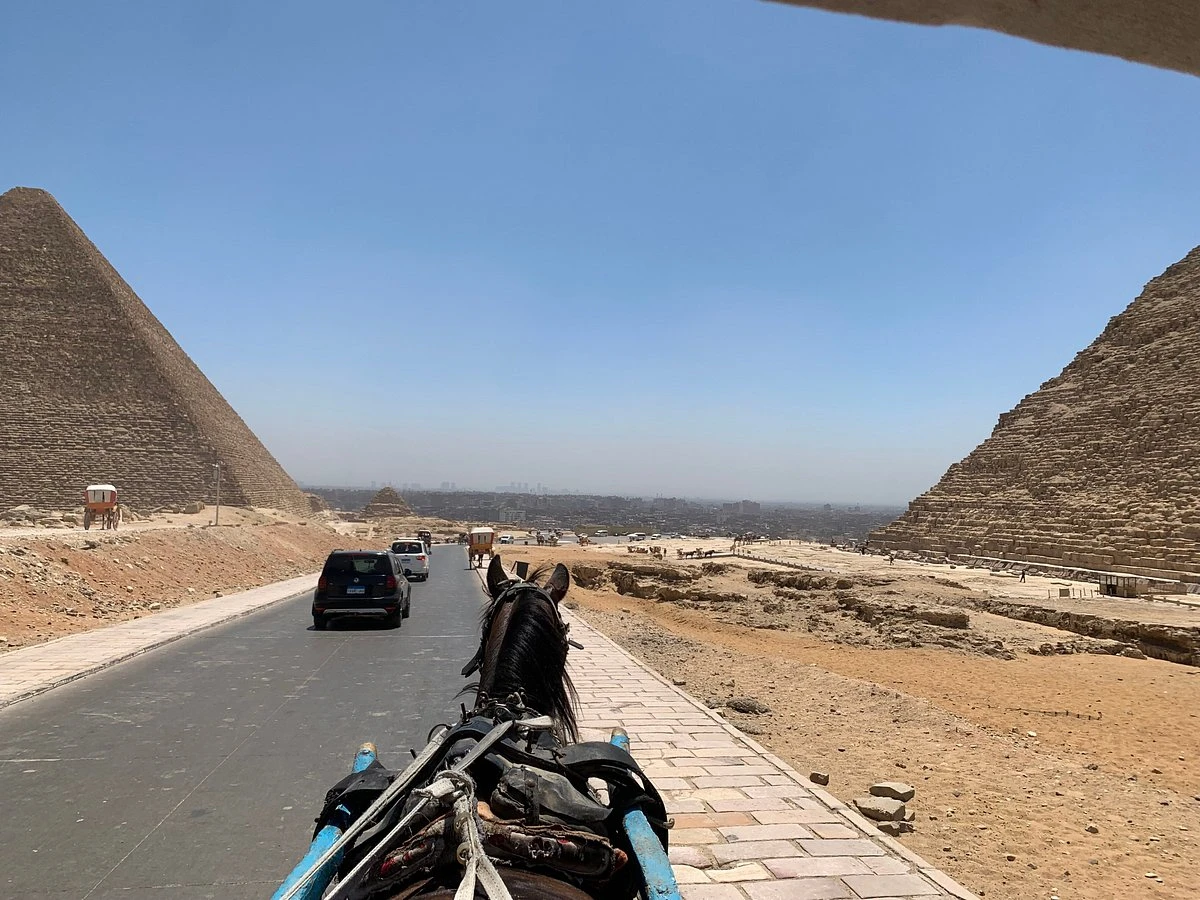
-webp.webp)


-webp.webp)




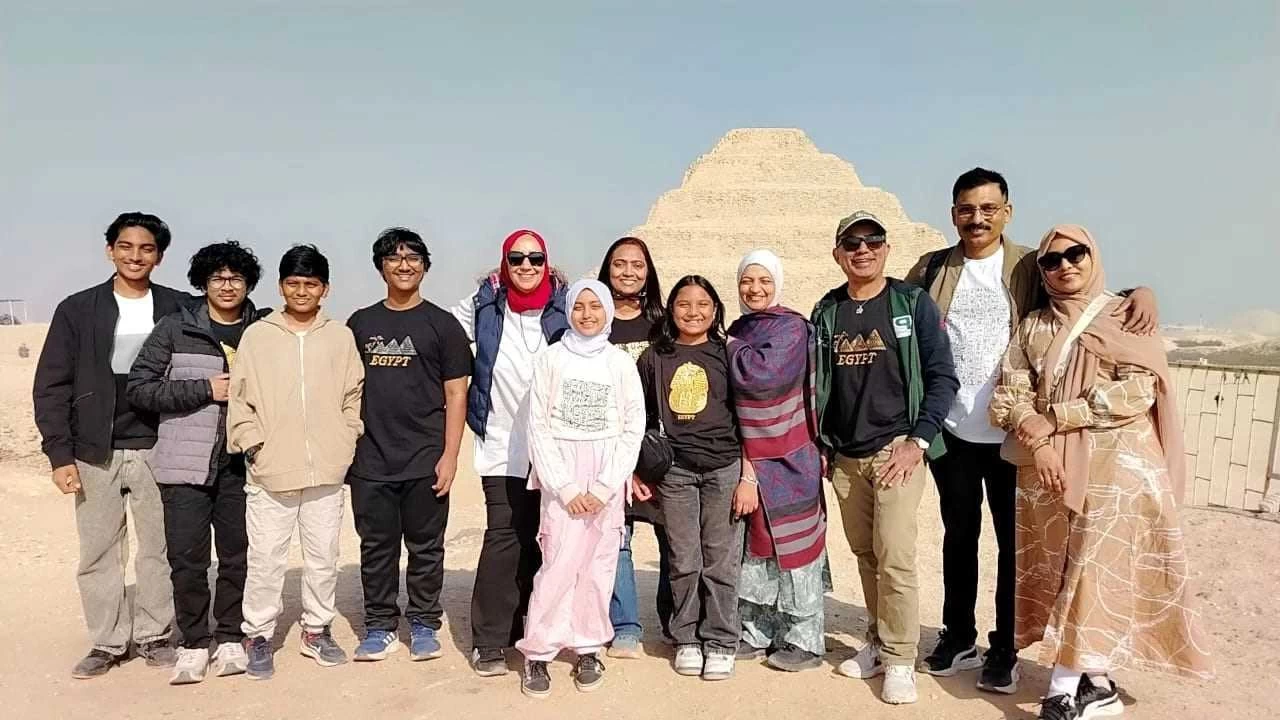
-webp.webp)
-webp.webp)
-webp.webp)
-webp.webp)
-webp.webp)
-webp.webp)
-webp.webp)


-webp.webp)
-webp.webp)

-webp.webp)
-webp.webp)
-webp.webp)
-webp.webp)
-webp.webp)
-webp.webp)



-webp.webp)

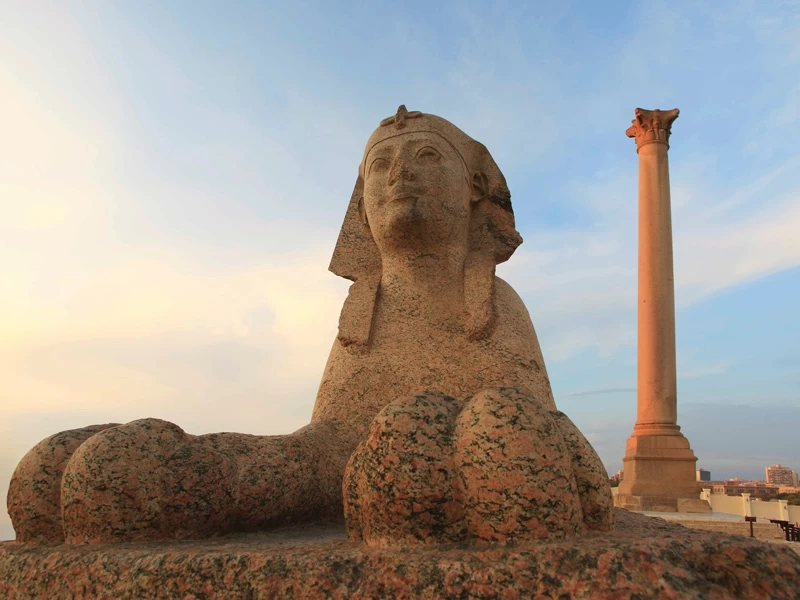




-webp.webp)
-webp.webp)










.png)

